The Tongan deepwater snapper fishery has a history of boom and bust cycles with fluctuating catches and poor economic returns. NIWA is working together with stakeholders and partners to develop a well-managed, economically and biologically sustainable fishery which could be a model for demersal line fisheries throughout the South Pacific.
Overview – needs and opportunities
The Tongan deepwater snapper fishery has had boom and bust cycles with fluctuating but generally declining catches. Catches peaked at over 600 tonnes in 1987 and again at over 250 tonnes in 2002 but dropped to less than 100 tonnes in 1996 and again more recently.
It has been an historically important export fishery for Tonga but since the early 2000s a lack of investment and confidence in fishing sector led to a decline in the number of active vessels and catches dropped. There has also been a reliance on single target species (flametail snapper – Etelis coruscans) and a single market (Hawaii) hence there is a need for diversification in target species and improved marketing.
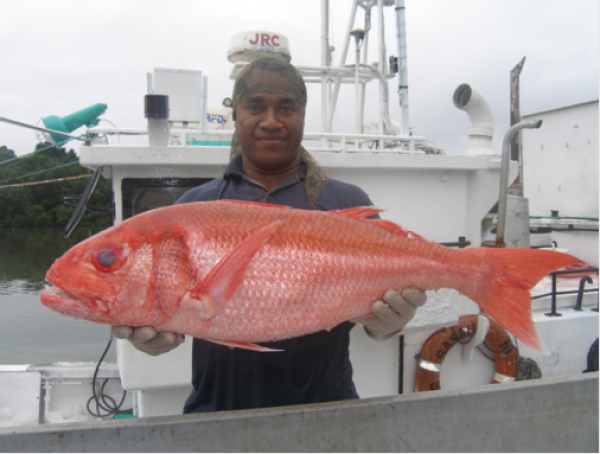
Exploratory fishing trials in 2009/2010 caught bluenose, and an associated bycatch of warehou, kingfish and grouper, in the southern part of EEZ which could provide an opportunity for diversification.

Over the last 2–3 years, the Tonga Government have provided more support for the domestic deepwater snapper fishery through the introduction of low interest rate loans and grants for upgrading fishing vessels. There has been a subsequent upsurge in the number of vessels and a resulting increase in catches from the fishery, to the extent that there is now concern over the sustainability of the fishery. This has led to an even more pressing need for diversification of the target species and for the development of markets for other less preferred species (eg saddleback snapper).
It has also identified an opportunity to try targeting other resources including pelagic species using mini-longlines, squid using vertical jig lines, and bluenose (and the associated bycatch) using drop lines powered by hydraulic winches.
Approach
The project is being funded by MFAT under the NZAid partnership fund. It is being implemented in two phases and, in addition to NIWA, draws on the expertise of the Tongan Ministry of Fisheries, the Tonga Fishing Industry, and the Pacific Community (SPC). Key outputs during phase 1 covering the first two years were:
- A strategic economic development plan for the fishery with an implementation pathway for the plan over the next 3 years.
- A bio-economic analysis which stressed the importance of conservative catch limits, suggested the fishery can sustain a maximum fleet size of 12–15 vessels, and highlighted the need for diversification of species caught in the fishery and markets.
- Preliminary stock assessment and spatial population models developed for flametail snapper
- Preliminary bluenose fishing trials and survey showed bluenose and associated bycatch could be caught in commercial quantities in southern part of Tongan EEZ.
- Capacity building for MoF staff through ongoing training in the statistical package ‘R’ and attachments to SPC.
- Capacity development for the fishing industry through accounting and finance spreadsheets.
Results
The deepwater line fishery operates in depths of 50–450 m and catches a multi-species assemblage of snappers, emperors, groupers, trevallies, warehous and occasionally bluenose. Catches are broadly spread throughout banks and seamounts in Tonga EEZ. Highest catch rates tend to be to the north and south—and lowest at 19–22° S around Tongatapu. Bluenose are only caught in significant numbers south of about 23° S.
Only domestic Tonga licensed vessels are allowed to fish for in the deepwater snapper fishery. Most vessels are 10–15 m long and use Samoan hand reels to carry out the fishing. Many vessels have been in the fishery for a long time and are 20–30 years old. The smallest vessels tend to fish the shallower banks (<100 m depth) closest to port and often target less preferred species such as saddleback snapper. The larger vessels go further afield and target the flametail snapper in slightly deeper water (100-200 m) on the slopes of the seamounts. In contrast, bluenose live deeper than 400 m and occur at the southern edge of the EEZ and require larger vessels with hydraulic winches to safely fish the deeper and more distant waters.
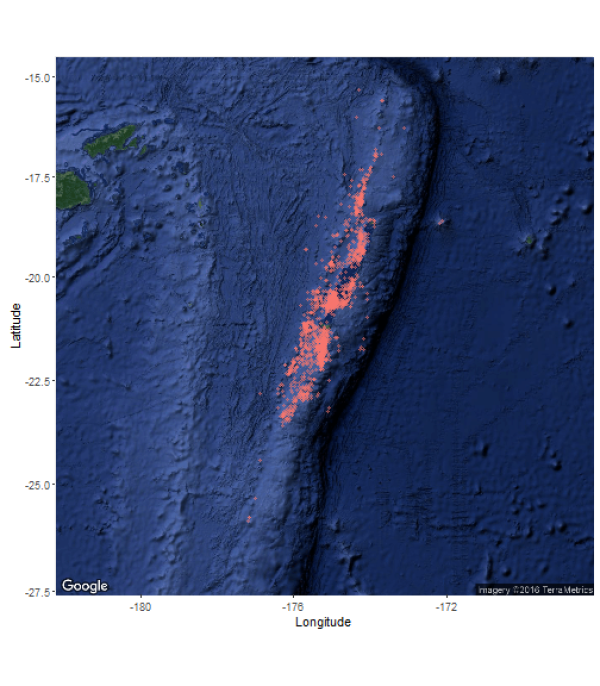
Stock assessment
Flametail snapper form about 50% of the total catch. A preliminary stock assessment of flametail snapper carried out by Pacific Community scientists suggested the current biomass was 26–36% of the pre-exploitation level (Hill et al. (2016).
The biomass which supports the maximum sustainable yield (the BMSY) is at 50% of the unexploited level. The assessment also suggested a Maximum Sustainable Yield of around 75–85 tonnes. Catches over the past decade have generally been below this level but increased to over 100 tonnes in 2017, leading to concerns over its sustainability.
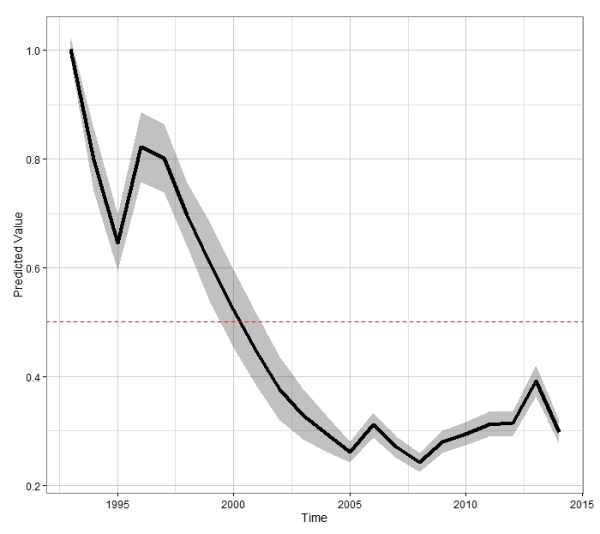
Spatial distribution of flametail snapper depletion
A Spatial Population Model of the fishery was developed to determine whether there had been spatial patterns in the flametail snapper depletion.
As would be expected, the model suggests higher levels of depletion around the main fishing ports in Tongatapu, Ha’apai, Vava’u and lower levels of depletion further to the south and north.
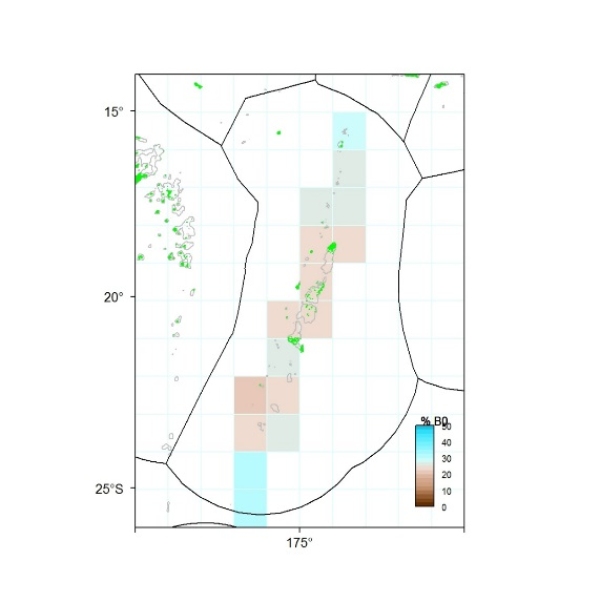
Work planned over the next three years
- Further evaluation of economic viability of fishery and develop sub-sector plan
- Improve governance and management of fishery sector, ensuring robust and transparent decision making
- Develop assessments and use Spatial Population Model for evaluating alternative management strategies
- Improve capacity and practical skills for Tongan MoF and NFC staff
- Train fishers in new techniques and purchase and install gear
- Trial and establish methods for monitoring snapper and bluenose fisheries.
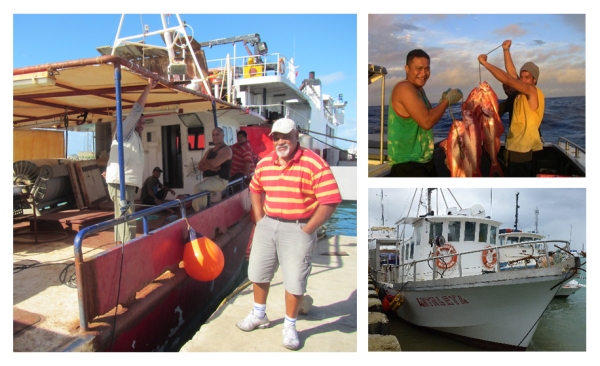
Further reading
Hill, N.J.; Williams, A.; Peatman, T.; Nicol, S.J.; Halafihi, T. (2016). Development of a harvest strategy for resource-limited deepwater snapper fisheries. SPC factsheet. 8 p.
Project funding and partners
Funding for the project was through the Ministry of Foreign Affairs and Trade NZAid Partnership programme. Our partners on the project include the Tonga Ministry of Fisheries, the Pacific Community and the Tongan National Fisheries Council.

External People Involved:
Phil James (SPC, New Caledonia)
Tuikolongahau Halafihi (MoF Tonga)

